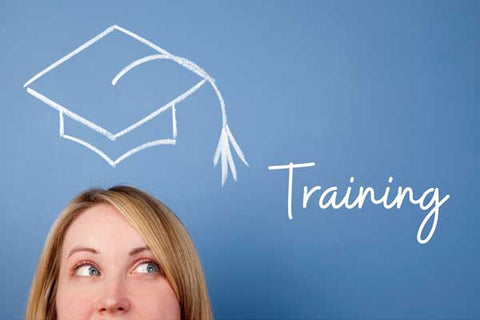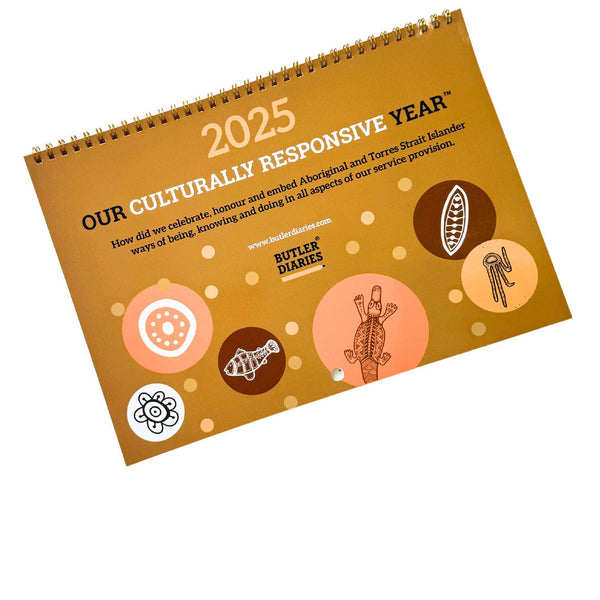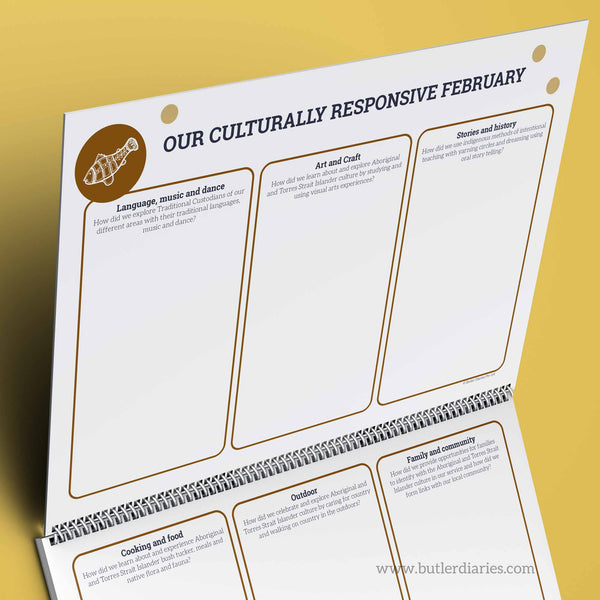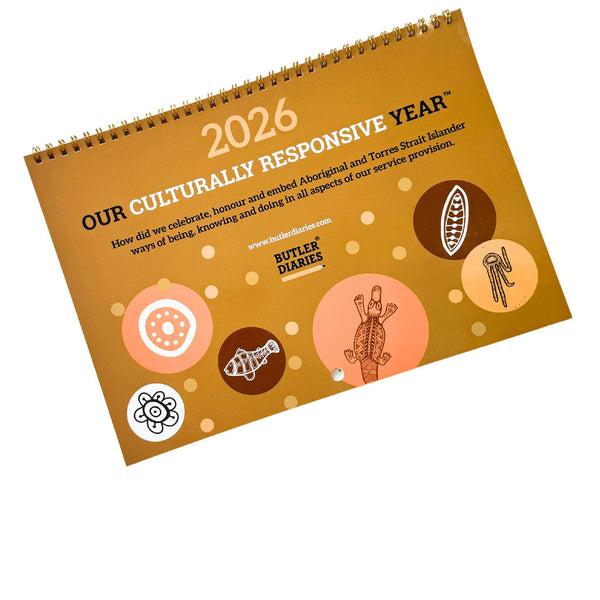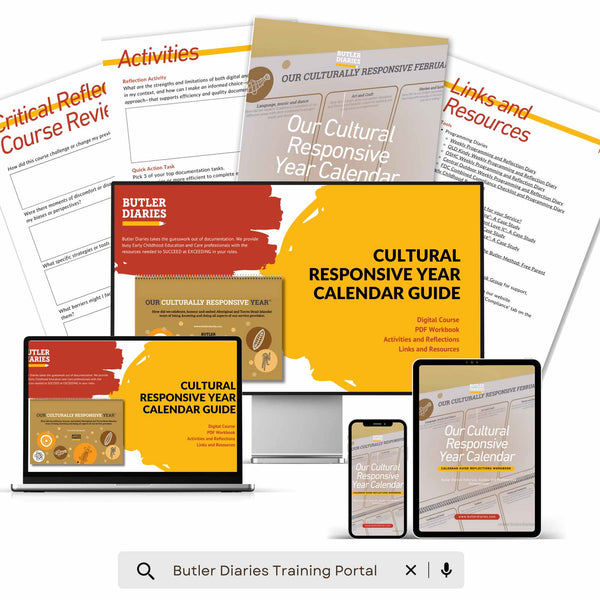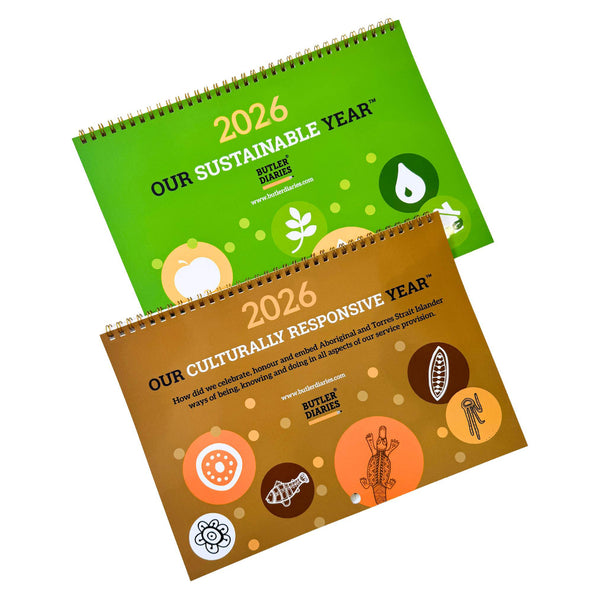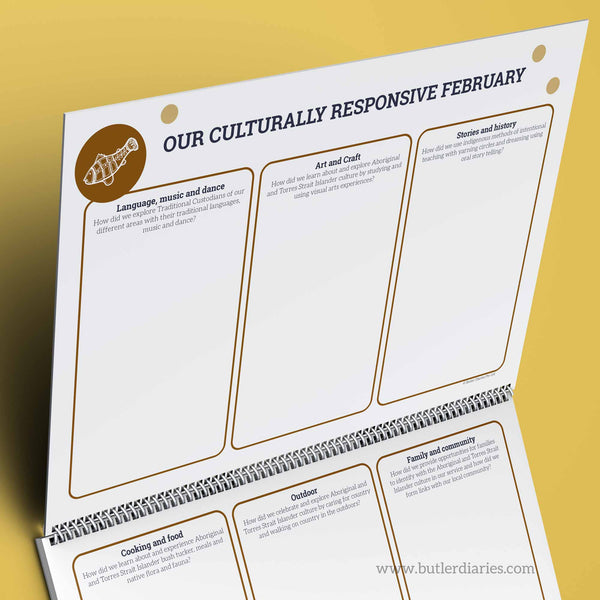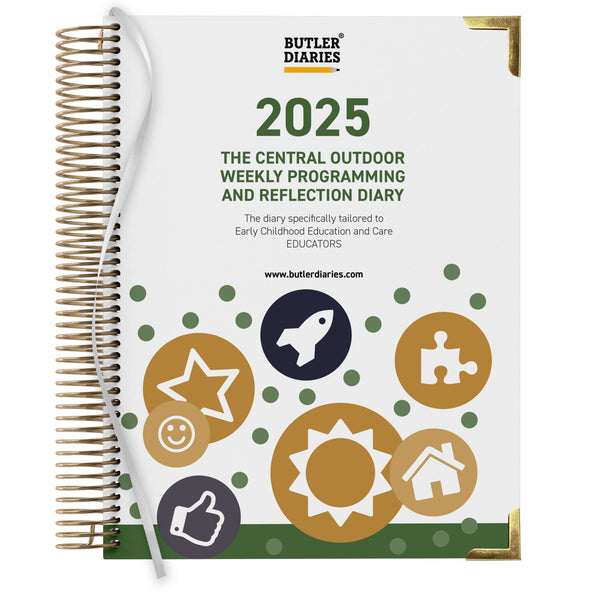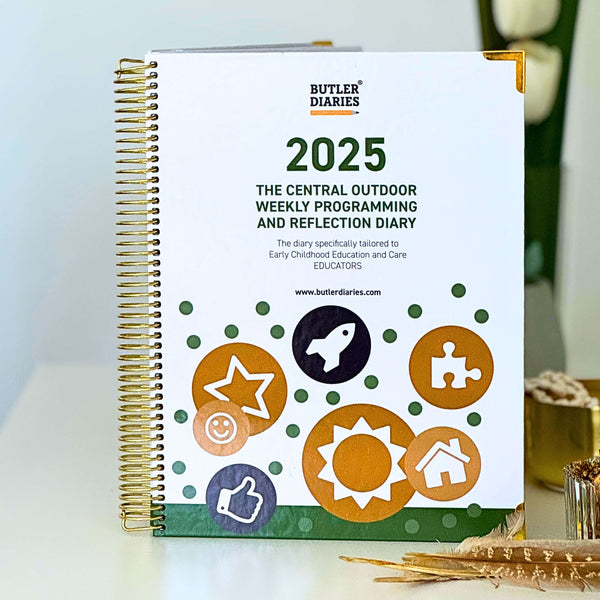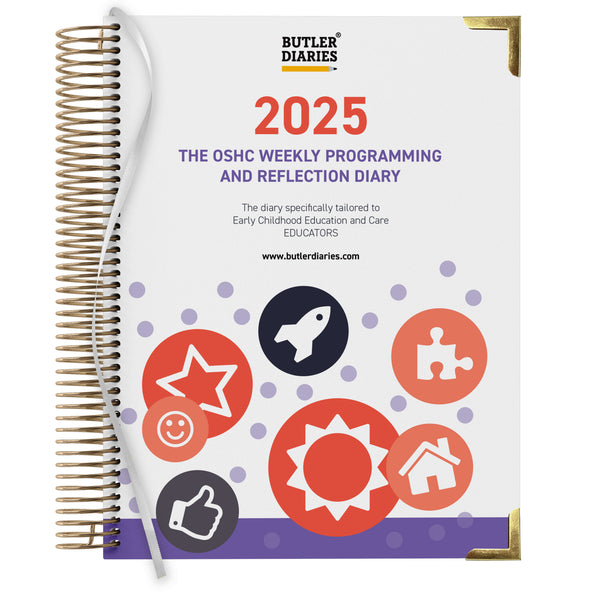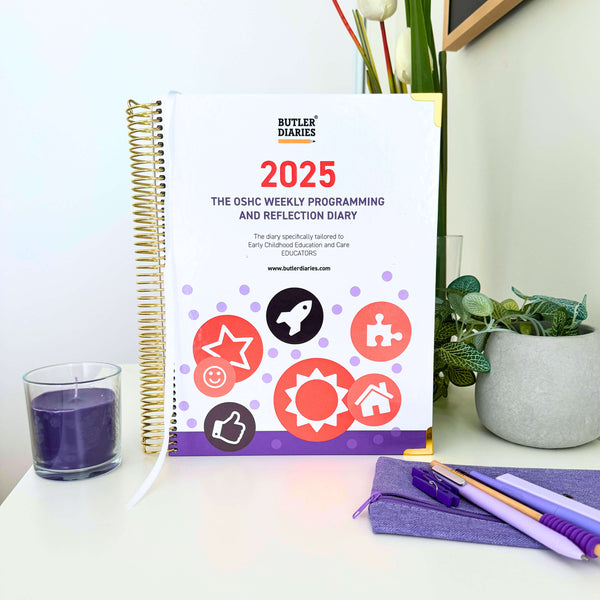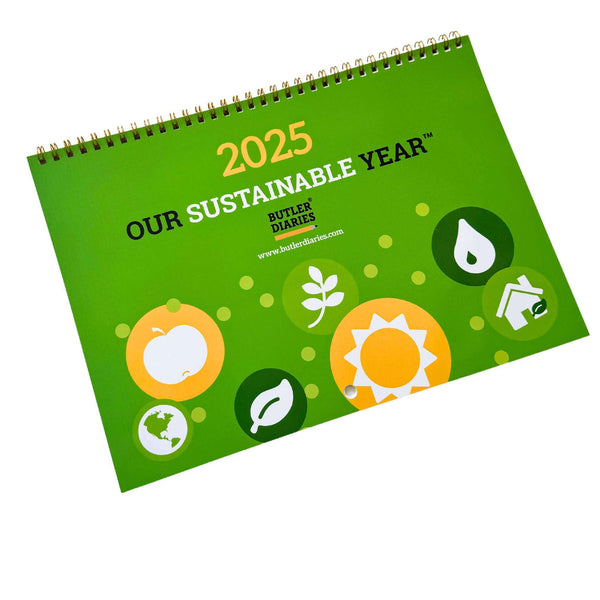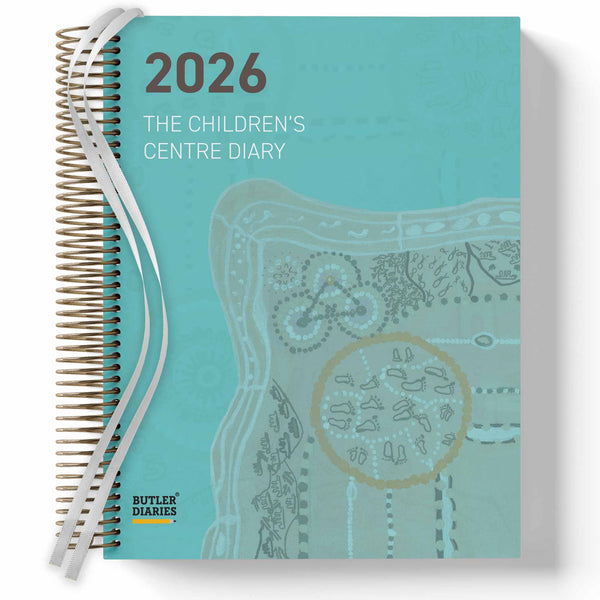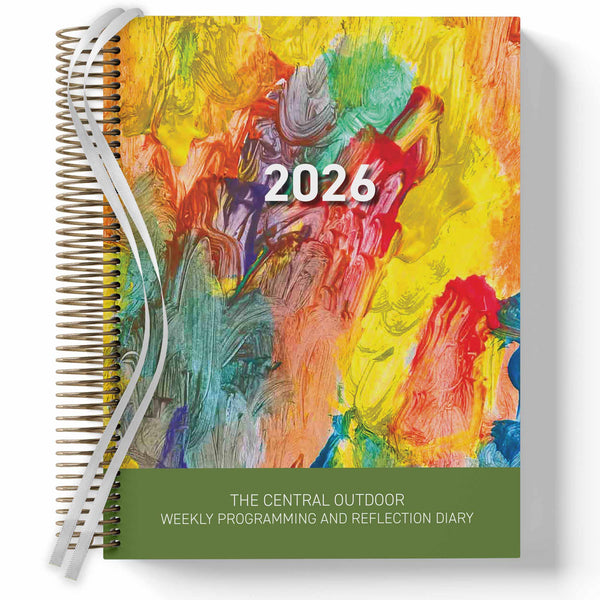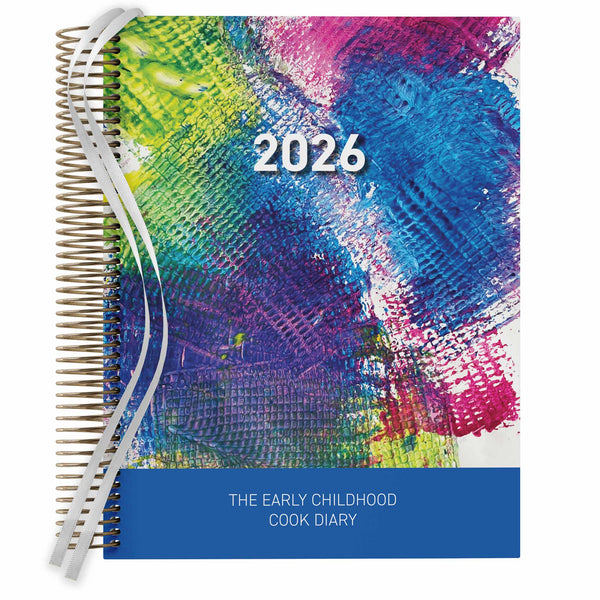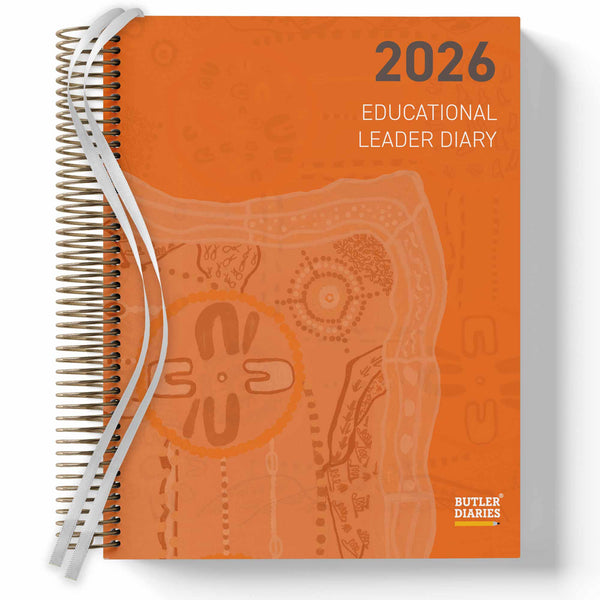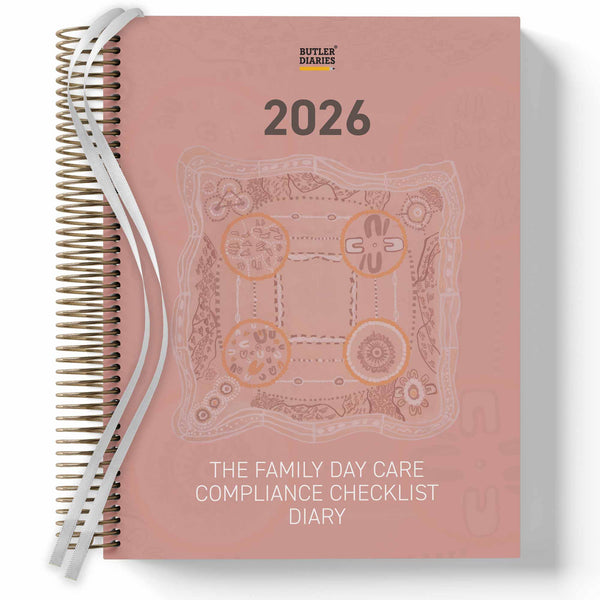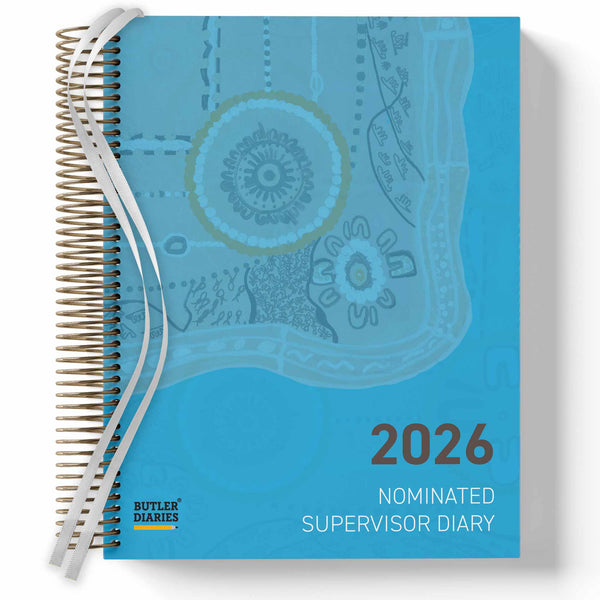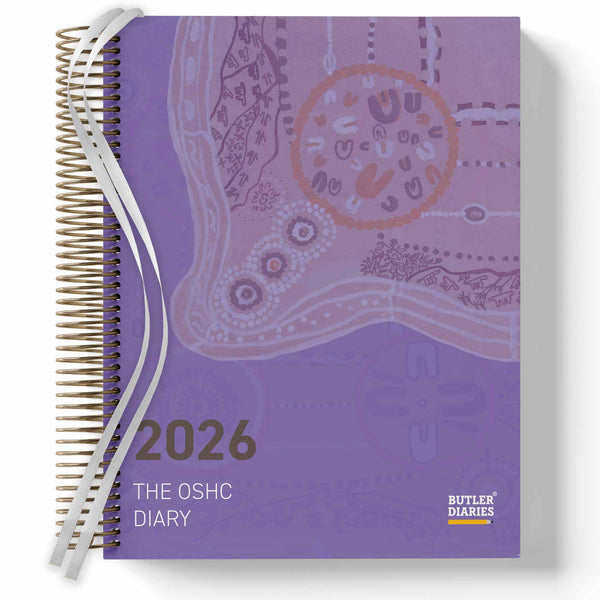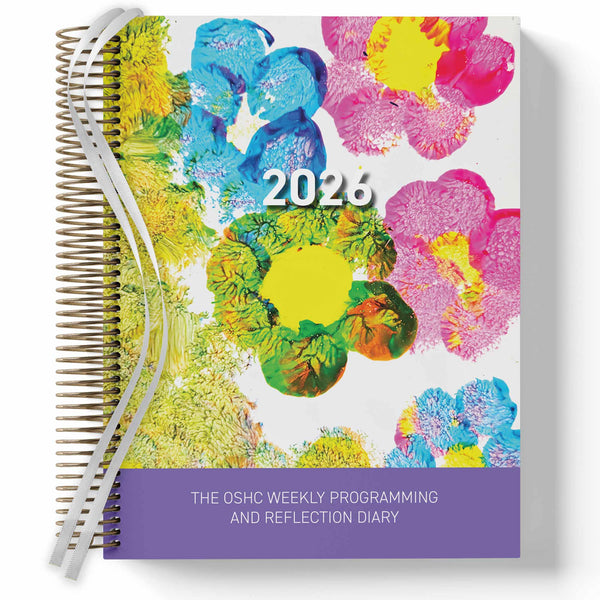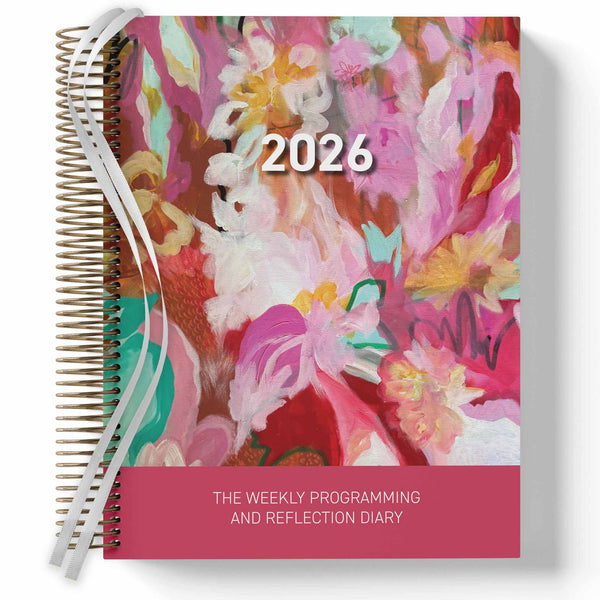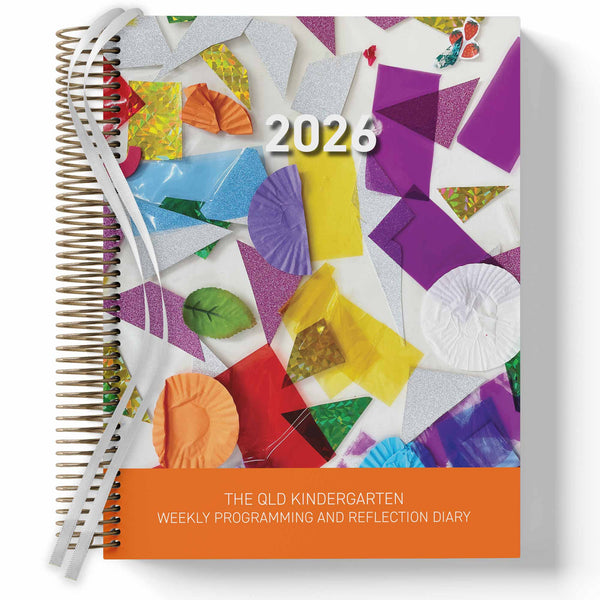Cultural responsiveness isn’t a one-off event — it’s a daily, evolving commitment. It shapes how we plan, reflect, and build relationships with children, families, and communities. With the introduction of EYLF and MTOP V2.0, educators are called to move beyond surface-level inclusion and take up a more authentic, reflective, and collaborative approach to culture — one that actively honours and embeds Aboriginal and Torres Strait Islander perspectives across all areas of practice.
The guide unpacks culturally responsiveness within compliance contexts, explores how it links to frameworks and NQS, and provides practical documental tips for planning experiences, recording them in each space in your Our Culturally Responsive Year Wall Calendar, and linking it to your other documentation to show the cycle of planning and embedded practice.

Cultural Responsiveness and EYLF and MTOP v2.0
Both the EYLF and MTOP v2.0 embed cultural responsiveness as a foundational principle of quality education and care. The frameworks shift the focus from "cultural competence" (used in previous versions) to cultural responsiveness, reflecting a deeper, more dynamic approach.
Cultural responsiveness is defined as an ongoing process of respectfully engaging with children’s and families’ diverse cultural identities, beliefs, languages, and experiences — not as a checklist to complete, but as an evolving, reflective practice. It includes critically examining one’s own bias, building genuine partnerships, and actively challenging discrimination and inequity.
Specifically, the frameworks place strong emphasis on recognising Aboriginal and Torres Strait Islander cultures as foundational to Australia’s identity. They advocate for the inclusion of local knowledges, perspectives, and languages in everyday programs, environments, and decision-making. Educators are encouraged to learn with and from communities, rather than about them, and to embed Indigenous perspectives across all areas of practice.
Cultural responsiveness is reflected throughout the learning outcomes, principles, and practices — highlighting that children’s sense of identity, belonging, and wellbeing are deeply linked to how their culture is seen, heard, and respected.
Cultural Responsiveness and NQS
Cultural responsiveness is deeply embedded across several Quality Areas of the NQS, particularly in relation to how services foster identity, build partnerships, and engage in ongoing reflection. While the term "cultural responsiveness" may not always appear explicitly, its principles are reflected in the expectations for inclusive, respectful, and collaborative practice throughout the Standard.
-
Quality Area 1: Educational Program and Practice calls for programs to be based on each child’s knowledge, strengths, culture, abilities, and interests. This means educators must actively respond to the cultural context of the children in their care — not just acknowledge diversity but weave it into everyday learning.
-
Quality Area 5: Relationships with Children promotes the development of secure, respectful, and reciprocal relationships. Cultural responsiveness supports this by recognising how children’s cultural backgrounds shape their identity, communication, and sense of belonging.
-
Quality Area 6: Collaborative Partnerships with Families and Communities is perhaps the most direct in its expectation that services build relationships that honour and incorporate family and community cultures. It emphasises the importance of including Aboriginal and Torres Strait Islander perspectives and forming authentic partnerships with local communities.
-
Quality Area 7: Governance and Leadership expects that a service’s philosophy and decision-making reflect a commitment to equity, inclusion, and cultural responsiveness. This includes ongoing reflection on bias, power, and the cultural assumptions that inform service practices.
Together, these Quality Areas position cultural responsiveness not as an optional extra, but as a core part of exceeding-level practice that is integrated across documentation, environments, relationships, and leadership.

The Cultural Responsive Calendar for ECEC
The Our Culturally Responsive Year Wall Calendar is more than a reflective tool — it’s a visual, evidence-based collaborative record of your ongoing cultural learning, partnerships, and intentional teaching. It helps educators not only embed cultural responsiveness in their practice and programming but demonstrate it clearly during Assessment and Rating and team reflection.
Each monthly section heading is strategically aligned with key EYLF/MTOP Practices and NQS Quality Areas. By engaging with these headings regularly, educators create consistent evidence of thoughtful programming, cultural safety, family partnerships, and community engagement.
-
Language, Music and Dance. Links to: QA1, QA5, QA6, EYLF/MTOP Practices: Aboriginal and Torres Strait Islander perspectives, Cultural responsiveness, Learning environments
This section captures how your service is including First Nations language, traditional and contemporary music, and cultural dance. Documenting how these are introduced and experienced shows intentional, respectful inclusion and gives voice to children’s cultural learning.
-
Art and Craft. Links to: QA1, QA5, QA6, EYLF/MTOP Practices: Learning through play, Holistic approaches, Ongoing learning and reflection
This section supports educators in capturing how children explore Indigenous culture through visual storytelling. By documenting the process (not just the product), educators can show how art is used as a vehicle for expression, identity, and cultural knowledge — not replication.
-
Stories and History. Links to: QA1, QA5, QA6, EYLF/MTOP Practices: Aboriginal and Torres Strait Islander perspectives, Intentional teaching, Holistic, integrated approaches
This section supports oral storytelling, yarning, Dreaming stories, and Indigenous ways of knowing. Documenting these practices highlights how educators create space for rich, respectful conversations and promote cultural continuity across generations.
-
Cooking and Food. Links to: QA1, QA3, QA5, QA6, EYLF/MTOP Practices: Sustainability, Family and community partnerships, Cultural responsiveness
Food is a powerful connection to culture. This section allows you to document how children engage with bush tucker, native ingredients, and family-shared recipes. It supports respectful conversations around cultural knowledge and sustainable practices.
-
Outdoor (Caring for and Walking on Country). Links to: QA1, QA3, QA5, EYLF/MTOP Practices: Connection to Country, Sustainability, Learning environments
This section reflects how your service promotes a respectful relationship with the land — from bush walks and nature play to learning about seasonal changes and local stories. It demonstrates children’s growing connection to Country and their role as caretakers.
-
Family and Community. Links to: QA6, QA7, EYLF/MTOP Principles: Partnerships with families and communities, Aboriginal and Torres Strait Islander perspectives
This section provides clear evidence of how you collaborate with families and local Aboriginal and Torres Strait Islander communities. It encourages ongoing relationship-building, not just tokenistic inclusion, and supports your service philosophy in action.
-
Reflect and Plan. Links to: QA1, QA4, QA7, EYLF/MTOP Practices: Critical reflection, Intentional teaching, Professional learning
This final section supports educators in reviewing their cultural learning journey each month. It gives space to acknowledge progress, identify gaps, and plan forward. This is essential documentation for showing ongoing improvement and reflective practice.
Why This Matters for Assessment and Rating
By using the Calendar consistently, services create a living portfolio of cultural responsiveness across the year — linked clearly to the NQS and learning frameworks. Assessors can see that cultural inclusion is embedded, collaborative, reflective, and responsive to your unique community.

Practical Documentation Tips for Documenting Aboriginal and Torres Strait Islander Learning in your Culturally Responsive Calendar
Documenting Aboriginal and Torres Strait Islander Language, Music, and Dance
The space is designed to capture respectful, ongoing, and local engagement with Aboriginal and Torres Strait Islander language, music, and dance — and how these are explored meaningfully with children.
1. Language Use and Exploration
Record how you are introducing and embedding local First Nations languages.
You could document:
-
Words or greetings used regularly
-
Daily phrases used in Acknowledgement of Country
-
Children’s responses or attempts to use the language
-
Displays of local words (weather, body parts, animals) in play spaces
-
Contributions or guidance from local Elders or community language keepers
-
Links to books or songs in First Nations languages
Why it matters: EYLF and MTOP V2.0 encourages educators to create intercultural spaces where local languages are visible, heard, and respectfully used — embedding connection to place and identity.
2. Traditional and Contemporary Music
Record how you’ve explored Aboriginal and Torres Strait Islander music traditions and modern artists.
You could document:
-
Listening to traditional instruments like the didgeridoo or clapsticks
-
Learning the meanings or stories behind songs
-
Using resources like ABC Kids Listen First Nations playlists or Songs for Country
-
Hosting live or virtual performances by local musicians
-
Family contributions of music from their cultural background
-
Reflections from children on how the music made them feel or move
Why it matters: Music is a powerful storytelling medium in Aboriginal cultures — documenting these moments supports Holistic and Culturally Responsive Learning.
3. Movement and Dance
Capture moments when children experienced dance as expression and storytelling.
You could document:
-
Participation in a local cultural dance event or incursion
-
Movement inspired by Dreaming stories (e.g. animal dances)
-
Using nature-based props (leaves, sand, sticks) in movement
-
Practising respectful observation and discussion of traditional dances (e.g. NAIDOC Week videos)
-
Reflections like: “We moved like the emu after reading that story”
Why it matters: Dance communicates kinship, identity, and story — all vital for children’s developing understanding of Culture and Country (EYLF and MTOP Learning Outcome 2.1).
4. Link to Critical Reflection and Planning
Don’t forget to record what happened next and how it impacted your planning. You can plan an extension experience in your program, adding a code and date so it can be linked back to the original experience in your Our Culturally Responsive Year Wall Calendar.
You might add:
-
“Children became curious about the Wodi Wodi language. We plan to include weekly language cards.”
-
“We realised the songs we used were from the Northern Territory, so we’re now learning local Dharawal songs with community input.”
-
“One child began making their own clapsticks. We’ve added natural materials to our music area to support this.”
Why it matters: EYLF and MTOP V2.0 stresses the importance of responsive planning based on children’s cultural interests and real-world engagement.
Documenting Aboriginal and Torres Strait Islander Art and Craft
This space is for capturing how your service explored Aboriginal and Torres Strait Islander culture through visual arts experiences — in a way that is respectful, intentional, and child-centred.
1. Introduce the Cultural Context First
Before beginning any artwork, document how you:
-
Introduced the meaning and cultural significance of the symbols, colours, or art forms
-
Shared stories or resources by First Nations artists or authors
-
Used books, videos, or artworks to build understanding of the cultural story behind the art
Why it matters: EYLF and MTOP V2.0 emphasises respectful relationships with culture — not replicating art styles without understanding.
2. Use Natural and Local Materials
-
Ochres, charcoal, sand, bark, or leaves
-
Natural paints or recycled materials
-
Tools like sticks, stones, or fingers instead of brushes
Why it matters: Many traditional artworks connect deeply to Country and place — using natural materials deepens that connection.
3. Document the Process, Not Just the Product
Include:
-
Photos or notes of the creative process
-
Children’s voices: what they said or how they described their work. You can capture this verbally or written in tools like the Children's Voices Diary.
-
Collaborative work (e.g. group mural or nature collage)
Why it matters: EYLF and MTOP encourages educators to listen to children’s interpretations, not just focus on outcomes.
4. Show Respectful Practice
-
Note how you avoided tokenistic “dot painting” without explanation. You can link reflections and experiences in your Calendar with a deeper reflection in your Programming and Reflection Diary exploring tokenistic vs authentic practice.
-
Document any guidance you received from a local Aboriginal person or organisation
-
Acknowledge where a particular style, symbol or story comes from — and whether it was appropriate to share
Why it matters: EYLF and MTOP v2.0 and ACECQA both highlight the need for cultural safety and community consultation.
5. Reflect and Extend
Write down:
-
What children learned or asked about
-
How the experience influenced future planning (e.g., visiting an art exhibition, reading a related Dreaming story)
-
Whether families contributed stories, materials, or feedback
Why it matters: Documenting how art led to further inquiry or connection shows critical reflection and intentionality.
Documenting Aboriginal and Torres Strait Islander Stories and History
Use this section in the Our Culturally Responsive Year Wall Calendar to capture how you explored Aboriginal and Torres Strait Islander oral storytelling traditions such as yarning, Dreaming stories, and the respectful sharing of history through First Nations voices.
1. Intentional Teaching Through Yarning
Record how you used yarning as a teaching method:
-
Circle times where children listened and contributed respectfully
-
Quiet, slow-paced conversations around stories and cultural meaning
-
Questions asked to spark deeper thinking (e.g. “What do you think the Rainbow Serpent is teaching us?”)
Why it matters: EYLF and MTOP V2.0 encourages reciprocal relationships and reflective listening — both key features of yarning.
2. Dreaming Stories with Context
Document how you:
-
Selected stories with permission and explained their cultural importance
-
Linked stories to the local Country or seasonal changes
-
Used natural objects (leaves, stones, animals) or puppets to represent the stories
Why it matters: Dreaming stories hold spiritual and cultural significance and must be shared with care, not as entertainment.
3. Use of First Nations Resources
Note the use of:
-
Books by Aboriginal and Torres Strait Islander authors
-
Videos or digital media made by First Nations people
-
Artwork or illustrations used to support storytelling
Why it matters: Authentic resources centre Indigenous voices and support accurate, respectful learning.
4. Children’s Reflections and Play
Record:
-
Children retelling stories in their own words or through play
-
Artwork, role play, or constructions inspired by a story
-
Comments or questions that show connection and curiosity
Why it matters: This shows that children are engaging with culture, not just hearing it passively.
5. Reflect and Extend
Include:
-
Your own reflections: What went well? What could be improved?
-
Next steps in planning (e.g. another story from the same Country, a related art experience)
-
Family or community input: Did anyone share a story or offer guidance?
Why it matters: Linking storytelling to future experiences shows that cultural learning is ongoing, intentional, and evolving.

Documenting Aboriginal and Torres Strait Islander Cooking and Food
This section is for capturing how your service explored Aboriginal and Torres Strait Islander bush tucker, meals, and native flora and fauna in a respectful and engaging way that connects children to culture, Country, and sustainability.
1. Introducing Bush Tucker and Native Ingredients
Record how you:
-
Introduced native foods (e.g. wattleseed, lemon myrtle, bush tomato, finger lime, kangaroo)
-
Sourced ingredients respectfully (e.g. local suppliers, bush food gardens, with community input)
-
Shared the cultural, medicinal, or seasonal significance of these foods
Why it matters: EYLF and MTOP V2.0 emphasises place-based, sustainable learning and respect for traditional knowledge systems.
2. Cooking Experiences with Cultural Context
Document:
-
Recipes made with children that reflect traditional ingredients or practices (e.g. damper with native herbs, tea with bush leaves)
-
Educator guidance during the experience — explaining why and how the ingredients are special
-
Where possible, inclusion of cultural stories or Elders’ voices while preparing food
Why it matters: Cooking is not just a sensory activity — it’s an opportunity for cultural transmission and storytelling.
3. Children’s Engagement and Sensory Exploration
Note:
-
Children’s reactions to taste, smell, texture (“This smells spicy like the bush!”). Templates like those in the Individual Observation Duplicate Book are perfect for capturing your observations, reflections, and children's voices with easy links to EYLF/MTOP.
-
Their conversations or questions during preparation
-
Ways they connected food to family experiences (“My pop cooks with kangaroo!”)
Why it matters: EYLF and MTOP encourages educators to document how children experience, explore, and relate to cultural content.
4. Family and Community Contributions
Document how:
-
Families shared recipes, ingredients, or stories connected to food
-
Community members contributed knowledge (e.g. guest cook, Elder, or bush tucker walk)
-
You reflected Indigenous perspectives in mealtime routines or menus
Why it matters: Partnerships with families and local communities are central to culturally responsive practice and Quality Area 6.
5. Reflect and Extend
Include:
-
What children learned and how the experience influenced future planning (e.g. starting a native herb garden)
-
Any new ideas sparked by the cooking experience
-
Links to sustainability or environmental practices that followed (e.g. composting food scraps, harvesting respectfully). You can then link the experiences in your Our Culturally Responsive Calendar with extension experiences in your Our Sustainable Year Calendar.
Why it matters: Showing how food experiences evolve into deeper inquiry and action demonstrates critical reflection and continuity.
Documenting Aboriginal and Torres Strait Islander Culture through the Outdoors
Use this section to document how your service explored Aboriginal and Torres Strait Islander culture through Caring for Country and Walking on Country — encouraging children to build a respectful, personal connection with the land beneath their feet.
1. Walking on Country Experiences
Record how you:
-
Took children on local walks, with intention and reflection (e.g. bush trail, creek, garden space)
-
Framed the experience with cultural context: “We’re walking gently on [Local Nation] Country.”
-
Encouraged children to notice signs of Country: trees, animals, waterways, tracks, smells
Why it matters: EYLF and MTOP V2.0 promotes deep connection to place and intercultural understanding through lived experience.
2. Caring for Country Activities
Document:
-
Actions like planting natives, tending a bush food garden, composting, or picking up rubbish with care
-
How these were framed as respectful responsibilities, not chores
-
Discussion or reflection around sustainability, custodianship, and seasonal cycles
Why it matters: Caring for Country is a core concept in Aboriginal culture, and aligns closely with EYLF and MTOP Practice: Sustainability and NQS QA3.
3. Children’s Observations and Responses
Note:
-
What children noticed, said, or asked during outdoor exploration (“That tree has a scar!”)
-
How they moved on Country (e.g. quietly, barefoot, slowly)
-
Drawings, artworks, or stories they created afterward based on what they saw or felt
Why it matters: This shows how children are engaging thoughtfully with the natural world and cultural concepts.
4. Community and Elder Involvement
Record any input or guidance from:
-
Local Aboriginal or Torres Strait Islander Elders or land councils
-
Visits to culturally significant sites (with permission)
-
Shared seasonal knowledge from local community members
Why it matters: Aboriginal and Torres Strait Islander communities hold unique knowledge of local environments and their rhythms — sharing this strengthens cultural responsiveness and community partnerships.
5. Reflect and Extend
Include:
-
What Country taught you and the children this month
-
How you’ll continue building outdoor cultural practices (e.g. creating a yarning space, introducing a seasonal calendar). You can link extension experiences in your Central Outdoor Weekly Programming and Reflection Diary.
-
Any reflections on how your outdoor environment supports or could better support Indigenous perspectives. Also show how you turned your reflections into actions in the Central Outdoor Weekly Programming and Reflection Diary.
Why it matters: Outdoor documentation helps demonstrate ongoing learning, sustainability, and cultural inclusion in your physical environment.
Documenting Aboriginal and Torres Strait Islander Culture through Family and Community
Use this section in your Calendar to record how your service created opportunities for families to identify with Aboriginal and Torres Strait Islander cultures, and how you formed meaningful connections with your local Indigenous community.
1. Family Voice and Participation
Document how you:
-
Invited families to share cultural knowledge, stories, recipes, artefacts, or languages
-
Displayed family contributions visibly (e.g. family flags, photo walls, community maps)
-
Collected feedback or reflections from families on how culture is represented in your service
Why it matters: EYLF and MTOP V2.0 highlights partnerships with families as essential to cultural responsiveness, identity, and belonging.
2. Creating a Culturally Welcoming Environment
Note how you:
-
Visibly acknowledged Country (e.g. signage, Acknowledgement wall, entrance displays)
-
Displayed Aboriginal and Torres Strait Islander flags, artworks, and resources respectfully
-
Ensured your physical and digital spaces reflect inclusive values and respect for culture
Why it matters: A culturally safe environment helps families feel seen, valued, and included — supporting NQS Quality Areas 6 and 7.
3. Community Engagement and Partnerships
Record:
-
Community visits to your service (e.g. Elders, artists, storytellers, cultural educators)
-
Excursions to local places of significance (with permission)
-
How you built ongoing, not one-off partnerships with local Aboriginal organisations
Why it matters: Meaningful cultural responsiveness must involve collaboration with community, not just internal activities.
4. Children’s Conversations and Connections
Note how children:
-
Talked about their own families or culture
-
Referred to community members they interacted with
-
Asked questions or shared stories after engaging with family or community activities
- Shared reflections through entries in the Children's Voices Diary
Why it matters: Children's reflections show real, relational learning — a key indicator of successful community engagement.
5. Reflect and Extend
Include:
-
How family or community feedback influenced your planning
-
What went well in building connections, and what challenges you faced
-
One new action or partnership you aim to build in the coming month
Why it matters: Reflecting on family and community inclusion supports continuous improvement and demonstrates alignment with EYLF and MTOP Principles and NQS QA6.

How to Link the Culturally Responsive Calendar to your Other Documentation
The Our Culturally Responsive Calendar is designed to complement and strengthen your existing documentation practices. By using it alongside your programming, reflection, and observation tools, you create a connected system of evidence that captures children’s learning, cultural identity, and your intentional teaching in action.
Children’s Voices Diary
Link it by:
-
Linking quotes or drawings from children in the Diary related to events or experiences noted on the calendar (e.g. after a bush tucker tasting or NAIDOC event)
-
Capturing how children’s ideas, curiosities, or cultural experiences shape calendar entries and future planning
-
Providing it as a reflection tool after a cultural learning experience
Example:
You may provide time and space for children to reflect and share their ideas in the Children’s Voices Diary after a guided walk on country.
Jane shares in the Diary that she liked talking about bush tucker and how different plants that don't look like food can be food.
This shows cultural responsiveness as child-led and educator-supported, in line with EYLF Outcome 1 and 2.

Weekly Programming and Reflection Diary
Link it by:
-
Using cultural dates, family contributions, or children’s comments recorded on the calendar to inspire your weekly program
-
Referencing the calendar during team meetings to plan culturally responsive experiences
-
Extending on monthly calendar reflections into your weekly reflection spread for deeper critical thinking
Example:
Many Educators plan their experiences in their Programming and Reflection Diary and then capture the visual evidence and evaluate the learning inside the Calendar. Using a simple code will show clear links in your documentation.
For example, you've planned to explore bush tucker recipes after Jane's interest in the Children’s Voices Diary and recorded it in your Programming and Reflection Diary with 'CV and the date of the entry' to keep the records linked.
These practices demonstrate how your calendar informs and extends your programming cycle, aligning with QA1 and EYLF and MTOP practices.

Individual Observation Duplicate Book
Link it by:
-
Referencing experiences that were noted in the calendar (e.g. “This experience was part of our learning about local dance shared by Uncle Kev.”)
-
Identifying patterns in cultural interest or development across different children
-
Using the calendar to choose culturally meaningful follow-up experiences for individual goals
Example:
You're now doing the Bush Tucker experience, you've captured the group's reaction and included photo evidence in your Our Culturally Responsive Calendar. Jane has continued to show a high interest in where the foods are found so you record an observation in your Individual Observation Duplicate Book and plan to extend on her interest by asking a local elder to come in and share where bush tucker is found. You take pictures and evaluate the children's learning in the Our Culturally Responsive Calendar.
Observations become more authentic and holistic when they’re grounded in cultural context and real-world events.

Our Sustainable Year Wall Calendar
Link it by:
-
Cross-referencing sustainability practices (e.g. Caring for Country) with cultural entries
-
Planning integrated cultural and environmental actions (e.g. bush food garden = culture + sustainability)
-
Using both calendars side by side for reflection, goal setting, and intentional planning
Example:
You've explored the bush tucker experience described in the previous section and now you've planned in your Programming and Reflection Diary (with a code C-Cal to show the extension is coming from the Cultural Calendar) to continue learning on bush tucker by creating a bush tucker garden. You complete the experience and include the images and descriptions in the Our Sustainable Year Wall Calendar.
Many Aboriginal and Torres Strait Islander perspectives are deeply connected to sustainability, land, and seasonal change, making the two calendars naturally compatible.

Bringing It All Together
To fully integrate your calendar with your documentation:
-
Plan your experiences in your Programming and Reflection Diary
-
Capture children's input and individual learning in the Individual Observation Duplicate Book and Children’s Voices Diary
-
Include photo evidence and evaluate experiences and group learning in your Calendars
-
Use simple codes to link the cycle of planning across documentation like a date and letters (OB = Observation, C-CAL = Cultural Calendar, S-CAL = Sustainability Calendar, P = Program, CV = Children's Voices Diary, etc.)
This alignment supports your entire team in working toward cohesive, culturally responsive documentation that reflects both the spirit and the standards of the EYLF V2.0 and the NQS and captures data in different ways using different methods as recommended to create a holistic overview of the child.
To Sum Up
When used consistently and intentionally, the COur Culturally Responsive Year Wall Calendar becomes more than a visual planner — it becomes a living record of your service’s cultural journey. It helps educators reflect on their own practices, elevate children’s voices, and build stronger, more respectful partnerships with families and communities. More importantly, it demonstrates that cultural responsiveness is not an isolated task, but a holistic, evolving part of quality early learning.
By linking your calendar entries to your programming diaries, observations, and reflections, you create a cohesive documentation system that clearly shows your commitment to inclusion, equity, and reconciliation in action. Whether you’re preparing for Assessment and Rating, building stronger team practice, or simply deepening your understanding of local culture, this calendar supports you every step of the way — with intention, integrity, and heart.
To learn more about how to use the Calendar, check out the Calendar Training inside our portal.

